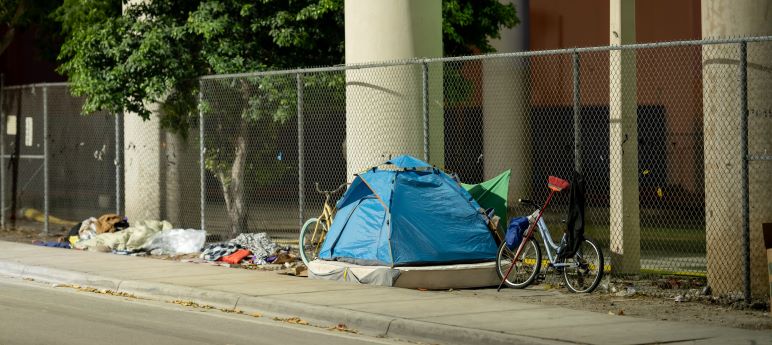Being what it is, California has a mélange of complex public policy issues – some of them fully blown crises – that defy resolution year after year, decade after decade.
Rather than recognize and deal with their complexities, the state’s politicians tend to condense responses into money.
K-12 education exemplifies the syndrome. The state’s nearly 6 million public school students perennially fail to make the cut in national tests of academic achievement, often trailing states that spend far less per-pupil on their schools.
It indicates that money is only one factor, and perhaps not the most important one, in educating children. Nevertheless, the political debate over the state’s educational deficiencies begins and ends with how much money is being spent, thereby providing a convenient excuse for failure.
California’s newest crisis, the nation’s highest level of homelessness in both absolute and relative terms, is following a similar arc.
Why upwards of 200,000 Californians, and probably more, are homeless involves factors that, much like educational aptitude, are as individual as fingerprints. While theories on causes and potential cures abound, once again the politics of the issue is focused on money – how much to spend, who spends it and who, if anyone, is held accountable for outcomes.
The politics of homelessness – or rather of spending on homelessness – appear to be entering a very contentious phase.
Early in his governorship, Gavin Newsom appointed himself as the state’s homelessness czar and during the first three years of his governorship (2018-21) the state spent nearly $10 billion on battling the social malady, according to a new state report. The money paid for 35 different programs administered by nine different state agencies.
That total does not count billions more in homelessness spending by federal and local governments or the additional billions in more recent years. The 2022-23 budget allocated another $10.2 billion while Newsom, facing deficits, proposes an additional $3.4 billion for 2023-24.
Despite the spending, homelessness numbers have continued to rise and legislators know that the voting public is losing patience.
“It’s very frustrating for the general public when they hear that in the state, we’re spending billions – and that’s billions with a B – of dollars on homelessness and housing. And yet they don’t feel that they’re seeing enough of an impact in their communities,” Assemblywoman Laura Friedman, a Burbank Democrat, said.
In recent months, Newsom has blamed local governments for a lack of aggressiveness, saying he would be “hard-pressed to make a case to the Legislature to provide them $1 more” if local officials don’t accelerate homelessness responses.
Newsom has not yet told the Legislature how he would compel stronger local action. Local officials say they need clear lines of accountability and a dependable stream of money to finance ongoing programs rather than yearly allocations that can vary widely.
“When you look at child welfare, transportation, criminal justice, health care, education, it’s clear who’s supposed to do what and how it’s funded,” says Graham Knaus, CEO of the California State Association of Counties. “Not with homelessness.”
So, one might wonder, if successfully battling homelessness is a matter of money, how much would it take?
Fourteen months ago, the Corporation for Supportive Housing (CSH) and the California Housing Partnership released a report projecting that California could end homelessness by 2035 were it to spend $8.1 billion a year until then – the vast majority of it for housing.
That totals more than $100 billion, a big number that does not include ancillary services such as food, medical care and treatment for mental illness, drug addiction and alcoholism. However, it might be a bargain if, in fact, it worked.
Dan Walters write commentary for CalMatters.


the more money you poor in, the more homeless there will be.
if you pay people not to work, less people work.
why is this confusing?
No.
Yes, but the money should be spent providing medical care for the drug addicted and mentally ill homeless people. We don’t need to toss any more money down the toilet on tiny homes.